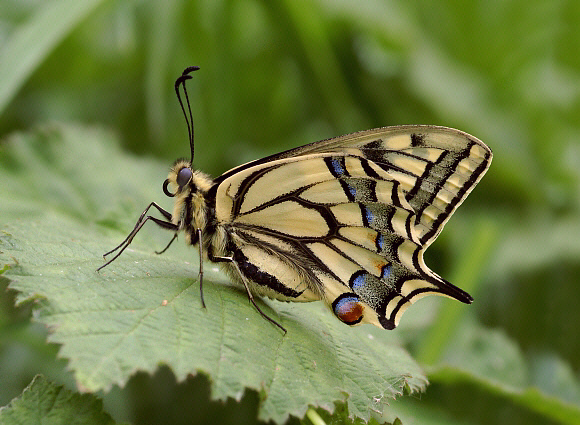Introduction
Back in the 18th century when Linnaeus created the System Naturae, the word Papilio was used as the genus name for every known species of butterfly in the world. Since then much has been learnt about the relationships between different species. Consequently most have been reassigned to new genera, and only about 215 of the 17600 currently known species are retained in Papilio.
Papilio machaon is widespread and common throughout much of the northern hemisphere. It occurs over the whole of continental Europe, eastward across temperate Asia to Japan; in Africa north of the Sahara; and throughout the temperate, subtropical and subarctic regions of North America.
Habitats
Throughout most of its range the Swallowtail shows itself to be highly adaptable, utilizing a wide variety of habitats including sub-arctic tundra, prairies, woodlands, hay meadows, roadside verges, river banks, sub-alpine pastures and farmland.
Lifecycle
In North America the egg is usually laid on Artimesia or Petasites (Asteraceae), although various umbellifers including Heracleum, Apium, Angelica, Coriandrum, Cryptotaenia, Daucus, Bupleurum, Peucedanum, Foeniculum, Zizium and Seseli (Apiaceae) are used in Europe and temperate Asia.
The young caterpillar is black, marked with a band of white. It looks remarkably like a small bird-dropping as it rests openly on the leaves. When fully grown in July it is a most magnificent creature – bright green, marked with narrow black bands and orange spots. Behind its head is an eversible fleshy pink forked structure called an osmaterium which is raised if the larva is irritated. This organ emits pungent chemicals, capable of deterring ants, wasps and flies.
The chrysalis occurs in 2 color forms, being either plain green, or light brown with a dark lateral stripe. It is attached vertically by a thin silken girdle and by the cremaster, usually low down on the stem of a reed, where it hibernates until the following spring.

Adult behavior
The butterfly has a characteristic powerful gliding flight, and is capable of covering large distances. Males indulge in ‘hill-topping’, i.e. flying to congregate at the top of hills, where they compete for the attention of passing females. At lowland sites they patrol back and forth along a regular route in search of females. Often both sexes home in on a particular clump of bushes where courtship and copulation take place. The pair often remain joined for 2 or 3 hours before the female departs to oviposit.
In the morning, and again in late afternoon both sexes can be seen flying freely about their habitat, pausing regularly to nectar at the pink flowers of angelica, knapweeds, marsh thistles, red campion, ragged robin and valerian. When nectaring they keep their wings constantly fluttering to prevent the weight of their bodies from dragging down on the fragile flowers. This fluttering behavior is typical of all Papilioninae, wherever they occur in the world.
